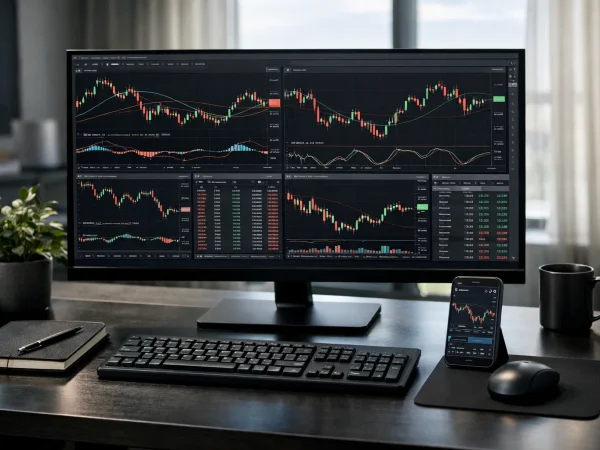
How to Know if You Need to Replace Your Industrial Chiller Unit?
Industrial chiller units are essential pieces of equipment across many sectors, from manufacturing and plastic injection moulding to food and beverage processing. They keep operations running smoothly by maintaining consistent cooling, which protects machinery, products, and processes. But like any hardworking machine, a chiller will eventually reach the point where repair no longer makes sense. Recognising when it’s time to replace your industrial chiller can save you from unnecessary downtime, rising costs, and unexpected breakdowns.
In this blog, we explore the key signs that suggest it may be time to invest in a new industrial chiller.
Signs You Need to Replace Your Industrial Chiller Unit
Declining Performance and Efficiency
One of the clearest signs that a chiller is nearing the end of its lifespan is declining performance. If your system is struggling to maintain the required temperature, despite regular servicing and maintenance, it may no longer be up to the task. You might notice fluctuations in cooling or longer operating cycles as the unit tries to meet demand.
Older chillers tend to consume more energy, which increases running costs. Advances in chiller technology over the past decade have also made modern systems far more efficient, meaning even a working but dated unit could be costing more to operate than a newer model. Rising energy bills are often a sign worth investigating.
Frequent Repairs and Downtime
All mechanical equipment requires maintenance, but when your chiller is breaking down repeatedly, it’s often a sign that bigger problems are looming. If you’re calling in engineers more frequently and repairs are becoming increasingly expensive, you may reach the point where replacing the unit is a more cost-effective solution.
Repeated breakdowns don’t just cost money in repairs; they also impact productivity. Unplanned downtime can result in missed deadlines, wasted materials, and dissatisfied customers. Investing in a reliable, modern chiller can provide peace of mind and keep your operations on track.
Age of the Equipment
The lifespan of an industrial chiller system depends on its type, use, and maintenance history, but most systems last between 15 and 20 years. If your chiller is approaching or has exceeded this age range, it’s worth considering a replacement.
While an older chiller may still be running, age-related wear and tear can reduce efficiency and increase the risk of failure. Technological advancements also mean that newer units often offer better temperature control, improved energy consumption, and lower emissions, making them a worthwhile upgrade.
Difficulty Finding Spare Parts
Another sign that your chiller may need to be replaced is the difficulty in sourcing replacement parts. As models age, manufacturers may discontinue certain components, making repairs more challenging and expensive. If lead times for spare parts are getting longer or prices are rising due to scarcity, replacing the unit with a current model can avoid future headaches.
Outdated Technology
Technology has moved on significantly over the past two decades, and this applies to chillers too. Modern industrial chillers often come with advanced controls, touchscreen interfaces, remote monitoring, and diagnostic tools that older models simply don’t have. These features allow better management, quicker fault detection, and more precise control over operations.
If your current system lacks these benefits, upgrading to a newer chiller could improve performance and make day-to-day management far easier for your team.
Environmental and Regulatory Considerations
Many older chillers use refrigerants that are now being phased out under environmental regulations. If your system operates on an outdated refrigerant, you may soon face restrictions on its use, making replacement unavoidable. Switching to a chiller that uses low global warming potential (GWP) refrigerants can help your business stay compliant and support your environmental goals.
Changing Business Needs
Sometimes it’s not just the condition of the chiller that signals the need for replacement but changes in your business. If your cooling requirements have increased due to expanded production, new equipment, or higher output, your existing chiller may no longer be suitable.
An undersized chiller can struggle to keep up, while an oversized one can waste energy. Assessing your current and future needs with a cooling specialist can help determine whether a replacement or an additional unit is the right choice.
Rising Operating Costs
Even if a chiller is technically functioning, it may still be draining your budget. Older systems often have lower energy efficiency ratings and may not take advantage of modern energy-saving features. If you’ve noticed a steady rise in operating costs without a clear explanation, your chiller could be the culprit.
By replacing an ageing unit with a more efficient model, you can lower energy consumption, reduce utility bills, and benefit from potential tax incentives or grants for energy-efficient equipment.
Professional Assessment
If you’re unsure about the condition of your chiller, a professional assessment can provide clarity. Engineers can evaluate your system’s performance, check for wear and tear, test energy efficiency, and identify potential weak points. This process can help you make an informed decision about whether to continue repairing the unit or invest in a replacement.
Final Thoughts
Replacing an industrial chiller is a significant investment, but it’s one that can pay off in the long run through improved efficiency, lower operating costs, and reduced downtime. By keeping an eye out for the warning signs — including declining performance, frequent repairs, age, and rising costs — you can plan for replacement before a complete failure disrupts your operations.
Taking a proactive approach, combined with advice from cooling specialists, will help you make the right choice for your business and keep your operations running smoothly for years to come.





